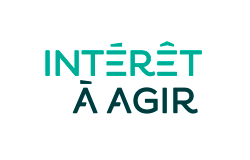When applying the law, the judge creates law
Portalis, one of the most famous drafters of the Civil Code, already reminded us of this in 1804 when our first Code was adopted:
« There is a science for legislators just as there is one for magistrates; and one does not resemble the other. The science of the legislator consists of finding in each subject the principles most favourable to the common good: the science of the magistrate is to put these principles into action, to branch them out, to extend them, through wise and reasoned application, to private cases, to study the spirit of the law when the letter kills ».
Today, what image comes to mind when we think of « law »?
It is the set of rules adopted by public authorities, at the forefront of which are the law, the Constitution, treaties, and all other norms that regulate our daily lives. This is the written law aimed at organising society and preventing conflicts.
What image comes to mind when thinking of the judge?
It is the group of people in red or black robes, sitting in court in accordance with a certain reductive image, but primarily the words spoken by these magistrates. This is the spoken law aimed at resolving and settling conflicts.
What do these observations teach us?
That law is primarily a set of written texts and therefore, a priori, inert. But it is also a set of decisions whose content specifies how this particular text should be applied in this particular case.
The function of the judge is to interpret the law according to the statute. However, the law is general, abstract, impersonal, and cannot embrace all the cases that arise. Judges are therefore « living laws », « vivid and speaking laws ». The judge, as the interpreter of the law, is situated between the law and justice. (Jacques Krynen, « Le théâtre juridique – Une histoire de la construction du droit, » Paris, Gallimard, 2018, p. 245 et seq.)
Therefore, we should think of law like an iceberg: the entire body of written law constitutes its visible part, and the entire body of spoken law its submerged part, « the least visible but the largest and most creative » (J. Krynen, 2018). Indeed, interpreting the law has always been denoted by the term iurisdictio, meaning rigorously « to be under the jurisdiction of ». In other words, every French citizen is under the jurisdiction of French law and under the jurisdiction of French judges.
Knowledge of the law is possible because its letter is fixed. But the knowledge of iurisdictio is more complex. Confined to as many areas as the law encompasses (civil, criminal, commercial, administrative…), it requires projecting oneself into the dynamics of decisions made based on the same text to resolve different conflicts.
From this variety inherent to « individual tumults and the demands of collective life », judges construct coherent and evolving sets of decisions articulating the spoken law through their jurisprudence, the result of their interpretations.
- Considering that these decisions are only taken at the end of an adversarial procedure through which the parties express themselves in turn;
- Given that the audacity and ingenuity of a lawyer’s conclusions contribute significantly to the reflection preceding the judge’s pronouncement;
- For these reasons, the opportunity is given to us to influence the production of spoken law since « jurisprudence is constructive of law. It is as much a source of law as the statute is ».
